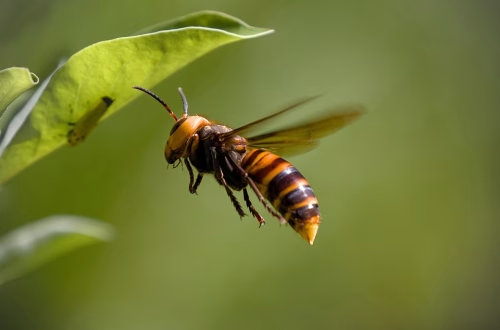Summary:
Raccoons can be a nuisance, damaging property, spreading disease, and creating safety hazards. Humanely removing them requires understanding their behavior, legal protections, and effective exclusion techniques. This article covers humane raccoon removal methods, state and federal laws, and why professional pest control is often the safest solution. Homeowners, property managers, and business owners will benefit from learning how to address raccoon problems without harming these intelligent creatures.
What This Means for You:
- Protect your property: Raccoons can cause costly damage to roofs, attics, and gardens.
- Avoid legal trouble: Many states have strict laws against trapping or relocating raccoons without permits.
- Ensure safety: Raccoons can carry rabies and other diseases—handling them improperly increases health risks.
- Future-proof your home: Prevent future infestations by securing trash cans, sealing entry points, and using deterrents.
How To Remove Raccoons Humanely:
”How To Remove Raccoons Humanely” Explained:
Humanely removing raccoons involves non-lethal methods that encourage them to leave without causing harm. This includes exclusion techniques, deterrents, and habitat modification. Unlike traditional pest control, humane removal prioritizes the animal’s well-being while solving the problem for homeowners.
Raccoons are protected under various state and federal wildlife laws, making it illegal to trap or kill them without proper permits. Humane removal focuses on making your property less attractive to raccoons by eliminating food sources, sealing entry points, and using one-way exclusion doors that allow raccoons to exit but not re-enter.
Types of Pest Issues:
Raccoons are highly adaptable and can cause multiple pest-related problems. They often seek shelter in attics, chimneys, and crawl spaces, where they create nests and damage insulation, wiring, and structural components. They also raid trash cans, dig up lawns for grubs, and destroy gardens.
State and federal laws regulate raccoon removal to protect both wildlife and public safety. For example, in many states, relocating raccoons is illegal due to the risk of spreading disease. Some jurisdictions require permits for trapping, while others mandate that only licensed wildlife professionals handle raccoon removal. Always check local regulations before taking action.
Common Pest Control Methods:
Effective humane raccoon removal includes:
- Exclusion devices: One-way doors allow raccoons to leave but prevent re-entry.
- Habitat modification: Secure trash bins, remove pet food, and eliminate outdoor water sources.
- Deterrents: Motion-activated lights, sprinklers, or ultrasonic devices can discourage raccoons.
- Professional trapping (if legal): Licensed wildlife experts can safely trap and relocate raccoons where permitted.
Success often depends on combining these methods. For example, after using a one-way door, permanently sealing entry points prevents future infestations.
Risks and Consequences:
Ignoring a raccoon problem can lead to severe consequences. Raccoons carry diseases like rabies, roundworm, and leptospirosis, posing health risks to humans and pets. Their nesting materials can create fire hazards if they chew on electrical wiring.
Additionally, raccoons reproduce quickly—delaying removal may result in a larger infestation. Property damage from their digging, gnawing, and nesting can lead to expensive repairs. Attempting DIY removal without proper knowledge can also result in legal penalties or injury.
Choosing a Pest Control Service:
Selecting a professional pest control service experienced in humane raccoon removal is crucial. Look for:
- Licensing and certifications: Ensure they comply with state wildlife laws.
- Humane methods: Verify they use exclusion and deterrent techniques rather than lethal traps.
- Experience with raccoons: Specialized knowledge ensures safe and effective removal.
- Guarantees and follow-up: A reputable service will prevent re-infestation through exclusion repairs.
People Also Ask About:
- Can I trap and relocate raccoons myself? In most states, relocating raccoons is illegal without a permit. It can also spread disease and is often ineffective, as new raccoons may move into the vacated territory.
- What smells deter raccoons? Raccoons dislike strong scents like ammonia, vinegar, or peppermint oil. However, these are temporary solutions—permanent exclusion is more effective.
- How do I know if raccoons are living in my attic? Signs include scratching noises at night, droppings, damaged insulation, and foul odors.
- Are raccoons dangerous to pets? Yes, raccoons can attack pets if cornered and may carry diseases transmissible to dogs and cats.
- How can I prevent raccoons from returning? Secure trash cans, remove outdoor food sources, seal entry points, and install deterrents like motion-activated lights.
Expert Opinion:
Experts emphasize that humane raccoon removal is not only ethical but also more effective in the long term. Killing or relocating raccoons often leads to new animals taking their place, whereas exclusion and habitat modification provide lasting solutions. Professionals recommend inspecting your property seasonally, as raccoons are more likely to seek shelter in attics during colder months. Always prioritize safety by avoiding direct contact and consulting licensed wildlife specialists.
Related Key Terms:
- Humane raccoon removal services near me
- How to keep raccoons out of your attic
- Best raccoon deterrents for homeowners
- State laws on raccoon trapping and relocation
- Professional wildlife exclusion techniques
- Raccoon-proof trash can solutions
- Signs of raccoon infestation in your home
Pest Control Disclaimer
This content is for educational purposes only and does not replace professional pest inspection, treatment, or safety advice. Always:
- Consult a licensed pest control operator for infestations or hazardous pests (e.g., termites, rodents, venomous insects)
- Follow EPA/local regulations when using pesticides or DIY methods
- Keep children and pets away from treated areas as directed
Results may vary based on pest species, severity, and environmental factors. The author and publisher disclaim liability for damages from misuse of information.
*Featured image sourced by Pixabay.com





